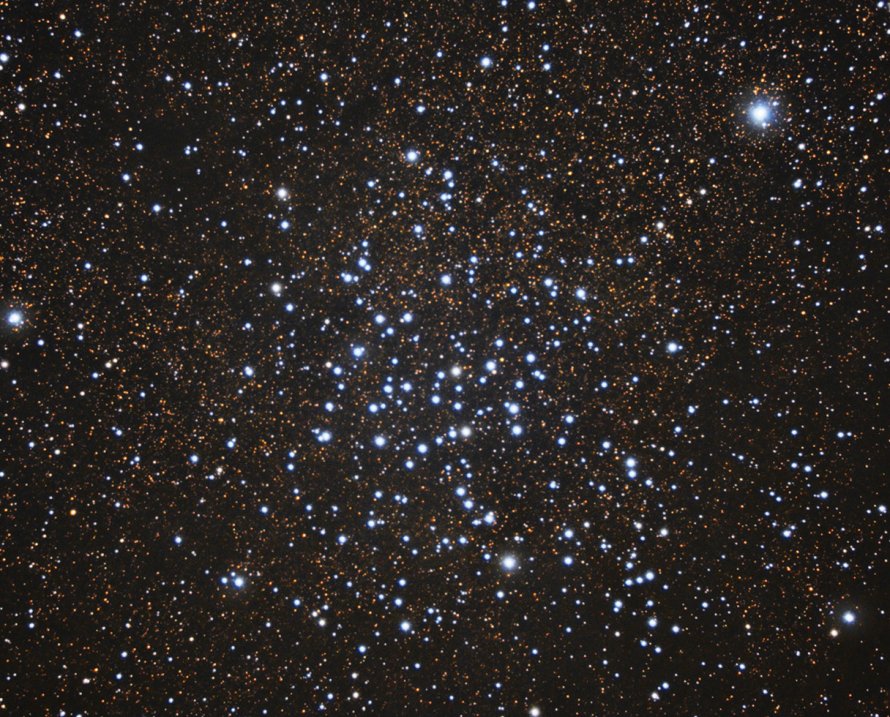M23 (NGC 6494)
Messier 23 (NGC 6494) is an open cluster located in the constellation Sagittarius, in the Orion Arm of the Milky Way Galaxy in the Local Group of galaxies. M23 is 21000 light years away from Earth.
M23 is best viewed during late summer, is magnitude 5.5, and can be viewed with naked eye (barely). M23 is 35' in apparent size. For reference, the full moon is 30'.
Observing difficulty: Easy
- Name:
- Type:
- open cluster
- Constellation:
- Sagittarius
- NGC or IC:
- NGC 6494
- Magnitude:
- 5.5
- Viewing:
- naked eye (barely)
- Size:
- 35'
- Distance (light years):
- 21000 LY
- RA:
- 17h 56.8m
- Dec:
- -19 1'
- Season:
- late summer
- Milky Way location:
- Orion Arm
- Galaxy group:
- Local Group
- Messier Marathon #:
- 95
* The naked eye can see up to magnitude ~7-8 objects under ideal dark sky conditions.
An Elegant Open Star Cluster
Nestled in the constellation Sagittarius, Messier 23 (M23) is a delightful open cluster composed of several hundred stars. It offers a beautiful spectacle for amateur astronomers and casual sky-gazers alike. This article explores M23's discovery, its physical properties, brightness, and how to locate and observe this charming celestial object.
Discovery and Observation
M23 was discovered by French astronomer Charles Messier on June 20, 1764. Situated approximately 2,150 light-years away from Earth, this open star cluster provides a splendid view to observers equipped with a small to medium-sized telescope.
Physical Characteristics and Magnitude
M23 spans an impressive 15-20 light-years across, comprising about 150-200 stars. The age of M23 is estimated to be roughly 220 million years, making it a relatively young cluster. M23 has an apparent magnitude of 5.5. While it's not visible to the naked eye, it can be observed with binoculars or a telescope as a scattered array of stars against the background of the Milky Way.
Stellar Composition
The majority of M23's stars are hot, young, and blue, indicative of the cluster's relative youth. These stars shine brilliantly against the darker space, providing a sharp contrast and a beautiful sight. M23's diverse stellar population provides astronomers with an opportunity to study these young stars and gain insights into stellar evolution.
Astronomical Significance
M23 is an excellent case study for astronomers interested in stellar formation and the early evolution of star clusters. Observing how the stars in M23 interact with each other and the surrounding interstellar medium helps astronomers understand the dynamic forces at play in such environments.
Finding and Viewing M23
M23 is located in the constellation Sagittarius, making it best visible in the summer months for Northern Hemisphere observers. The cluster is positioned north of the spout of the famous Sagittarius 'teapot' asterism. Through binoculars, M23 will appear as a fuzzy patch in the sky. A small to medium-sized telescope will resolve individual stars, allowing observers to appreciate the cluster's radiant display of young, hot stars.



